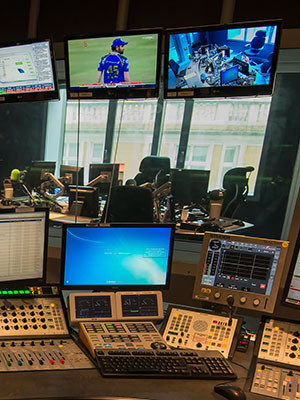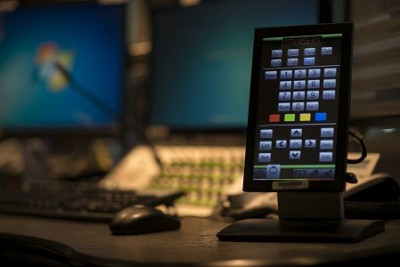Founded in London in the early 70s, Densitron was – as many companies are in the beginning - a small, specialist provider of an emerging range of thoughtfully assembled display technology products.
But that was 45 years ago. Although still London-based, it is no longer accurate to refer to Densitron as ‘small’. Consistent growth through the decades - coupled with recently becoming part of Quixant, the global gaming and broadcast technology group - has seen Densitron expand as part of a much larger, publicly traded company with offices in Europe, Asia, and America comprised of more than 200 employees generating annual turnover in excess of $100m.
The synergy between the companies is what was so attractive to both. Quixant’s expertise is in computer platforms and high-performance software solutions. Combining that with Densitron’s deep understanding of display technology enables both companies to focus their respective lenses on designing and marketing products that are highly refined and precisely tuned – in Densitron’s case - to broadcast and AV industry requirements.
Quixant also enabled Densitron to strengthen its long-standing, sustained development programme, which migrates the results of technical and developmental research to market in an equally logical and sustainable fashion that rarely fails to generate excitement from engineers and business owners.
One of the most exciting recent developments being pioneered by Densitron is the emergence and increasing adoption– in literally tangible terms – of haptics and human machine interaction, i.e., providing display and control technology that enables people to experience broadcast content or device control through heightened sensory input in the form of tactile-enabled technologies. This enables viewers and listeners to experience the powerful sense of touch alongside pictures and sound – by feeling something of it.
To do that, Densitron has devised interfaces that ingest and interpret broadcast signals and, in turn, translates those signals into tactile, i.e., haptic essence at the point of creation and migrate them electronically to be experienced physically at the point of consumption. It’s the improvements to QoS that the sense of touch provides that make enhanced human machine interaction (HMI) so desirable.
As HMI experts, Densitron’s driving goal is to further deploy those sensory benefits through Densitron display technology wherever human beings come into physical contact with an interactive device. The best example of Densitron’s commitment to delivering such tactile advantages is its recent acquisition of market-leading information display technology, Intelligent Display Systems (IDS).
The acquisition of IDS launched Densitron’s HMI capabilities into an entirely new orbit of human-machine encounter and has the potential to take such interactions far beyond the realm of static transactions. This is through control and feedback that is palpable, direct, scalable, and configurable, regardless of the platform on which IDS is run.
By marshalling Densitron’s marketing experience and Quixant’s global reach, IDS has already gained substantial traction, which is strengthening by the month as traditional control devices in studio, production, and OB facilities are steadily replaced by IDS displays that are familiar to today’s generation of operators, most of whom are far more comfortable with smooth glass surfaces - and even more so when those smooth surfaces respond to their touch. This is one of the many reasons why what Densitron and Quixant are doing with haptics is so exciting to the eGaming industry. Being able to genuinely “feel” what is taking place in a virtual world takes an already astonishingly popular and immersive game, pastime, competition, lifestyle – whatever you want to call it – into untold new levels of experience.
Although some question whether the sensation of touch is necessary to drive an immersive interactive experience, Densitron believes that there is no doubt that a sense of touch can deliver more inclusivity for those whose other senses may be missing or under-developed. Conveying a sense of feeling or movement greatly enhances, and in some cases become just as important as, visual acuity. Moreover, championing haptic technology and new levels of display interactivity delivers measurable, real-world savings in time, training, and productivity.























